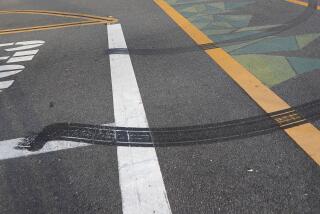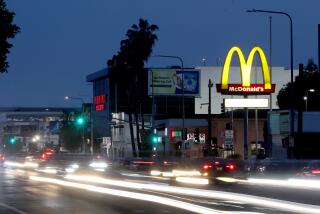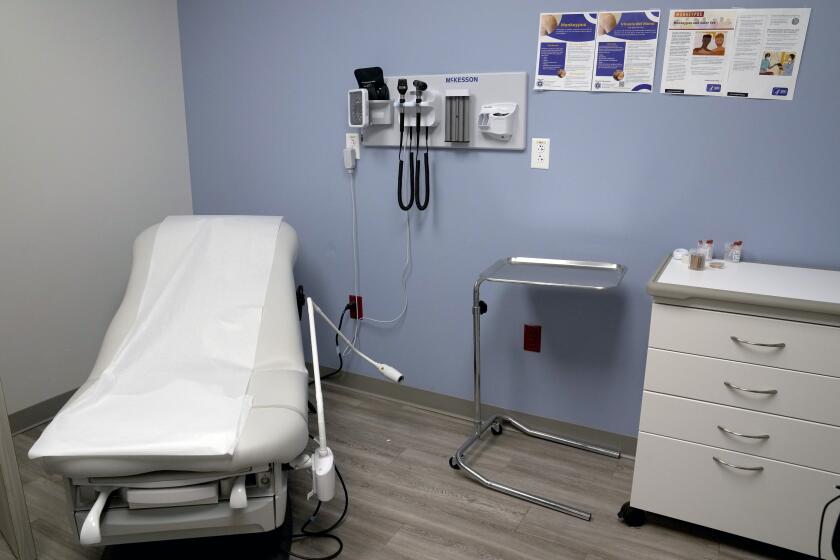Alarmed by deaths, regulators urge states to lower drunk driving limit
WASHINGTON -- With drunk driving still a stubborn national problem that accounts for one-third of all traffic deaths, federal safety regulators on Tuesday called on states to take a dramatic step: lower the legal limit for drivers’ blood-alcohol content from 0.08% to at least 0.05%.
The National Transportation Safety Board also called for government incentives to prod states into lowering their drunk-driving standard.
“Most Americans think that we’ve solved the problem of impaired driving, but in fact, it’s still a national epidemic,” said NTSB Chairwoman Deborah Hersman. Research shows that drivers with a blood-alcohol content, or BAC, above 0.05% “are impaired and at a significantly greater risk of being involved in a crash where someone is killed or injured.”
The recommendation comes about 13 years after President Clinton signed legislation requiring states to set a 0.08% blood-alcohol level or lose millions of dollars in federal highway funds.
Initially, Congress chose the carrot over the stick, creating a $500-million incentive fund to coax states into enacting the 0.08% standard. But after only a few states did, lawmakers voted in 2000 to require states to set a 0.08% blood-alcohol level or lose millions of dollars in federal highway funds. Currently, all states use the 0.08% standard to define drunk driving for non-commercial drivers ages 21 and older.
Hersman pointed out the board’s recommendation came on the 25th anniversary of the nation’s worst drunk-driving crash when an intoxicated driver, going the wrong way on Interstate 71 near Carrollton, Ky., killed 24 teenagers and three adults on a school bus and injured 34 others.
“We’ve made progress since that deadly night in Kentucky, but not nearly enough,” she said.
While total traffic fatalities have fallen, nearly 1 in 3 highway deaths still involves an alcohol-impaired driver, according to NTSB. There were 9,978 deaths in crashes involving drunk drivers in 2011.
“Many people believe that if a driver’s BAC is under the legal limit of 0.08, the driver is safe to drive,” according to an NTSB report. “In reality, by the time a driver’s BAC reaches 0.08, his or her fatal crash risk has at least doubled, and some studies indicate it may be many times higher.”
The NTSB recommendation drew opposition from the American Beverage Institute, a restaurant trade association, which said it would target moderate drinkers instead of dangerous drunk drivers.
“Further restricting the moderate consumption of alcohol by responsible adults prior to driving does nothing to stop hard-core drunk drivers from getting behind the wheel,” said Sarah Longwell, the group’s managing director. “It would simply divert valuable public resources that should be used to pursue the most dangerous offenders and instead use them to target drivers engaging in perfectly safe behavior.”
The lower blood-alcohol content was among 19 recommendations made by the board to reduce drunk driving, including calls for high-visibility enforcement and expanding the use of in-vehicle devices to prevent the start up of cars by impaired drivers.
Congress last year passed a transportation funding bill that offers additional highway money to states that require ignition interlock devices for DUI offenders. In a pilot project that runs through 2016, DUI offenders in Los Angeles County and three other California counties have been required to install the devices in their cars since 2010.
“Alcohol-impaired crashes are not accidents,” Hersman said. “They are crimes. They can – and should – be prevented. The tools exist. What is needed is the will.”
ALSO:
Prince Harry visits Sandy-battered N.J.
N.J. father arrested after son, 4, fatally shot playmate
Sgt. John Russell: Wrenching testimony in penalty phase
More to Read
Start your day right
Sign up for Essential California for news, features and recommendations from the L.A. Times and beyond in your inbox six days a week.
You may occasionally receive promotional content from the Los Angeles Times.






